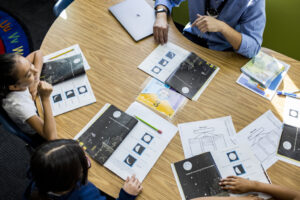Back in April, we published the Learning Acceleration Guide, a resource designed to help school systems respond to the challenges of COVID-19 and avert the anticipated learning loss from extended school closures. We knew that educators were doing heroic work to support their students through the overlapping crises of a pandemic, an economic collapse, and a long-overdue reckoning with systemic racism. And we knew schools needed all the support they could get to ensure students still had access to grade-appropriate assignments, strong instruction, deep engagement, and teachers with high expectations during such extraordinary circumstances.
We urged school systems to reject traditional “remediation”—attempting to help students catch up by assigning them work suited for earlier grades—because it practically guarantees students will lose more academic ground and get even less access to grade-level work in the future. The students stuck in this vicious cycle are disproportionately the most vulnerable: students of color, from low-income families, who are learning English, or with thinking and learning differences.
Instead, we offered practical advice to help school systems accelerate learning by quickly diagnosing the gaps in critical skills that might prevent students from accessing grade-level work, with “just-in-time” interventions and mini-lessons so they can be successful. We’ve spent the last seven months working with systems across the country to implement this approach.
At the time, we’d hoped most students would be back to full-time in-person instruction by now. But the pandemic still rages, and it’s clear that won’t happen for months, or perhaps until next school year. That means it’s now even more important that school systems prioritize learning acceleration, regardless of whether their instruction is in-person, virtual, or a combination of both. It’s how we can give students the best chance to minimize learning losses and catch back up to grade level as quickly as possible.
Today, we released an updated version of the Learning Acceleration Guide to help school systems face this new reality. In addition to more specific advice on how to implement learning acceleration in a virtual setting, we provide specific, measurable goals that districts can use to assess their progress this school year. We’ve placed special emphasis on the two most important things schools should prioritize right now: grade-appropriate assignments and strong instruction. As in the original guide, our advice is grounded in a set of four values that we believe school systems should prioritize:
- Grade-level content is the academic priority.
- Address inequities head-on.
- Support, assume the best, and train all your stakeholders.
- Collaborate, then communicate clearly.
This is an incredibly challenging time for everyone involved in education—from superintendents, principals, and teachers to students and families. But providing students with challenging, engaging learning experiences can accelerate them back to grade level—even during a pandemic—and help prepare them for what’s next.
You can download the updated Learning Acceleration Guide here. If you have any questions about implementing the ideas in the guide in your school or system, we’re here to help—just contact us.








